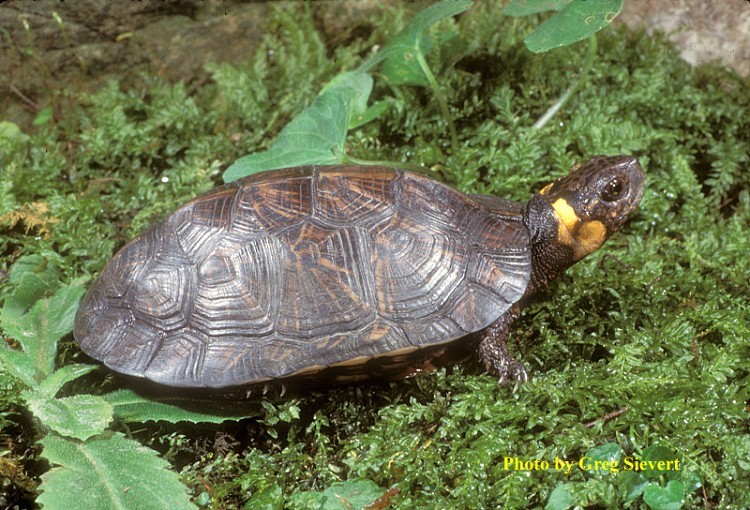Bog Turtle, Glyptemys muhlenbergii
The Bog Turtle, which occurs in the extreme northeast corner of Tennessee, is Tennessee’s smallest and most threatened turtle. Formerly known as “Muhlenberg’s Turtle.”
Description: A very small turtle (3.0 to 3.5 inches in length) with an orange, red, or yellowish patch on the side of the head behind the eye. The carapace (upper shell) is dark brown to black with the larger plates having yellowish or reddish centers. Plastron (lower shell) is dark with yellowish blotches and has no hinges. Males have a strongly concaved plastron, while females are flat. Young have distinct growth rings within each scute (plate) on carapace.
Similar Species: None.
Habitat: Prefers a specialized combination of open, shallow, wet areas with soft and muddy bottoms. Primarily in sphagnum bogs, wetlands, swamps, springs, and wet meadows; can occur up to 4000 feet.
Diet: Omnivorous; insects, crayfish, frogs, salamanders, snakes, and aquatic vegetation.
Breeding information: Mating occurs in shallow water during the spring. Females move to open, moist higher ground of sphagnum moss or soil and dig a nest with their hind feet. The female lays 1-6 white, elongated eggs per clutch in the hole and covers up. Hatchlings emerge after 45 to 65-day incubation in late summer or fall and burrow underground.
Status in Tennessee: Range-wide state of decline. Bog Turtles are listed as “Threatened” by TWRA and considered very rare and imperiled by the Tennessee Department of Environment and Conservation. Populations are under considerable threat due to the loss of their mountain bog habitat from farming, wetland destruction, and development. Also, Bog Turtles are at risk of being collected and sold in the commercial pet trade.
Fun Facts:
- The mountain bogs and wet meadows where these turtles live are very high in biodiversity and are an imperiled ecosystem.
Best places to see in Tennessee: Shallow, wet areas in northeast TN.
